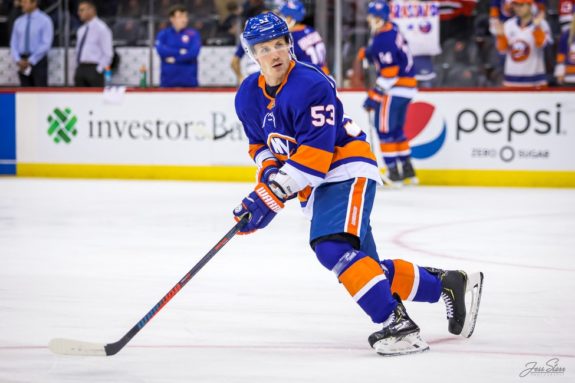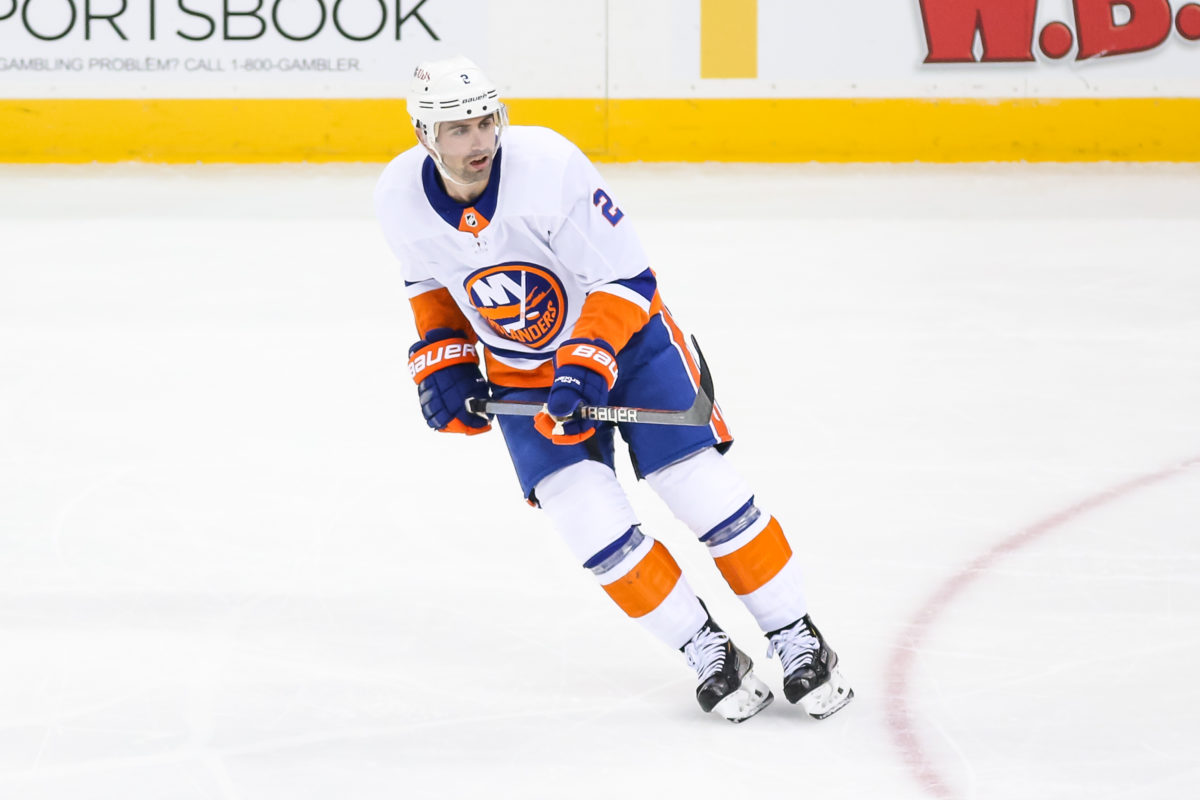The New York Islanders won Game 2 against the Boston Bruins 4-3 with a Casey Cizikas goal on a breakaway to help even the series as both teams head to Nassau Coliseum. The recent victory displayed how both teams can control a game and the entire series based on what style of play was on the ice, whether it’s fast-paced, a hard-hitting game, a game with great puck movement, or anything in between.
The momentum swung in Game 2 based on the style of play, and the Islanders have to take note of the adjustments they need to make for the upcoming games. Likewise, they need to continue to enforce certain aspects of their game against a Bruins team that has looked like a better team at times but has shown clear weaknesses.
The Fourth Line and the Hard Hits Must Remain Prominent
The Islanders were able to win Game 2 in large part because of how the fourth line played. Cizikas gets the credit for the overtime winner, but the fourth line’s overall play was what set the tone for the team and allowed them to control the majority of the game. The hard hits delivered from Cal Clutterbuck and Matt Martin, along with Cizikas, allowed the Islanders to constantly create turnovers against the Bruins’ potent offense and not only control the possession time but limit the scorers of their opponent from establishing any rhythm on the offensive end of the ice.

Additionally, the fourth line was able to aggressively attack the Bruins in the offensive zone along the boards and constantly create turnovers, ultimately allowing the Islanders to win Game 2. The “identity line” was able to lead the way, but throughout the game, the Islanders’ forwards were able to establish the forecheck and play rough along the boards to keep the game under control. As the team heads into the home stretch feeling confident with one win under their belt, they need to continue to keep the Bruins’ offense in check, and the most effective way of doing so, as seen from the first two games, is by playing aggressively along the boards and forcing the opponent to create turnover in the zone with hard-hitting to help.
Islanders’ Defense Needs to Continue Excellent 2-Way Hockey
The Islanders scored two goals in Game 1, with both goals coming as a result of the team’s defensemen shooting the puck on the net. Noah Dobson was able to send a puck from the point on the goal, and Anthony Beauvillier was able to re-direct it to the back of the net, while Adam Pelech was able to score the second goal with a great shot from the point as well.
Latest Islanders Content:
- New York Islanders Should Target Free Agent Alex Nylander
- A Hockey Fan’s Travel Guide to New York City
- 4 Things Patrick Roy Can Learn From Jon Cooper & Mike Sullivan
- Simon Holmstrom’s Fit on the Islanders is Unclear
- The Boss of Long Island: Mike Bossy’s Life Story
Moreover, in Game 2, the Islanders were able to score their second goal of the game primarily from Nick Leddy shooting the puck off the boards from the point, which Kyle Palmieri was able to collect and poke into the goal. The offense will struggle at times, as it did in the series against the Penguins, and finding opportunities will be crucial in the team’s run towards the Stanley Cup. The defense has been great all season, but adding an additional dimension to the offense through great play from the point can help put the team over the top, as it has in the playoffs thus far.

In addition to the play from the point, this series will require great play from the Islanders’ defensive pairings to stop the Bruins’ potent offense. The pairings have to be great in the neutral zone, as they were in Game 2 to limit the Bruins’ top line and their ability to create in space and on odd-man rushes, whether it be Brad Marchand crashing to the net from the wing or David Pastrnak, who scored a hat trick in Game 1, maneuvering around the defense.
The Islanders’ defense did an excellent job establishing themselves at the blue line and making it difficult to move the puck into the zone in Game 2 and was also able to constantly create turnovers when their opponent had the puck in the offensive zone. There is still room for defensive improvement, especially when the Bruins are able to distribute the puck, allowing for open shots in front of the net, but the excellent defensive play can help fuel the potential series upset.
The Top Line Must Step Up
The top line in Mathew Barzal, Jordan Eberle, and Leo Komarov has struggled in the playoffs, to say the least, scoring only two goals in the eight games, with Eberle being the recipient of both. Barzal, in particular, has been quiet for the Islanders as defenses are preparing to defend his speed and ability to crash the net, making the star scorer, who found the back of the net 17 times in the regular season, look rather inefficient. The struggles from the 24-year-old scorer leave head coach Barry Trotz with a few questions about how to deal with the top line, if at all.

The Islanders need the top line to start finding the back of the net, especially against a Bruins team that is exceptional on both ends of the ice, requiring the entire team to step up, and a potential shakeup might be needed as a result. However, the rest of the team’s combos have played well in the playoffs, and it would be a great risk to sacrifice the chemistry and great play of another unit to help the top line. The Islanders’ back end of their forwards unit has fueled the success to this point, and it will likely help keep the team competitive throughout the Stanley Cup Playoffs, leaving possibilities to help the top line rather limited.
What Else the Islanders Need to Adjust
For the time being, the Islanders appear to have solved the goaltending situation, with both Semyon Varlamov and Ilya Sorokin rotating starts, depending on which goaltender has the “hot hand” or momentum from the previous start. Varlamov led the Game 2 victory with 39 saves on 42 shots, but Sorokin has a .934 save percentage in the five games he has started.
While Trotz likes to rotate the goaltenders in the Stanley Cup Playoffs, as he did in the previous two runs the Islanders had, the coaching staff will have to ultimately decide which goaltender will be the one to carry the team if they intend to make a run at the Cup, given the history of teams winning the Stanley Cup with a primary goaltender carrying the team. Otherwise, the team has to continue to focus on eliminating the Bruins’ top line of forwards, which continue to find scoring chances and the back of the net, with the shift scoring five goals in the first two games.